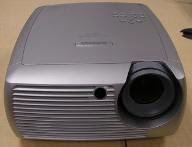 From the Crichton book of the same name, which was published in 1969 and which was his first Big Break. I'm not sure I should even be patronizing anything attached to Crichton, given his weirdo ostrich stance on global warming, but I cannot resist his crush on science. This movie would never have been made the way it was now (and particularly not post-Outbreak - there is simply not enough vomiting of organs in this film, and nobody's suit gets cut with a scalpel, at least not unintentionally). The pace is incredibly slow, dwelling lovingly on each scientific procedure, and especially on the equipment.
From the Crichton book of the same name, which was published in 1969 and which was his first Big Break. I'm not sure I should even be patronizing anything attached to Crichton, given his weirdo ostrich stance on global warming, but I cannot resist his crush on science. This movie would never have been made the way it was now (and particularly not post-Outbreak - there is simply not enough vomiting of organs in this film, and nobody's suit gets cut with a scalpel, at least not unintentionally). The pace is incredibly slow, dwelling lovingly on each scientific procedure, and especially on the equipment.The film starts with soldiers observing a slumbering town named Piedmont, in New Mexico (the look of which I swear was copied from Ansel Adams' "Moonrise in Hernandez, New Mexico" - see pic).
 Turns out Piedmont is not actually asleep - everybody has died because they were exposed to bacteria which came down on a super-secret satellite sent up by army guys trying to explore the possibilities of alternative types of life extant in outer space. (Maybe they were also trying to find biological weapons, but that's not really clear till later.) A crack team of scientists is assembled, including the mastermind who has been involved in the government project to collect these extraterrestrial organisms. (Can I just say that I love the scene in movies when a crack team of scientists is assembled? I hope one day to be part of either the assembling or the assemblage of a crack team of somebodies. I'm pretty sure at this point it won't be of scientists, but hey.)
Turns out Piedmont is not actually asleep - everybody has died because they were exposed to bacteria which came down on a super-secret satellite sent up by army guys trying to explore the possibilities of alternative types of life extant in outer space. (Maybe they were also trying to find biological weapons, but that's not really clear till later.) A crack team of scientists is assembled, including the mastermind who has been involved in the government project to collect these extraterrestrial organisms. (Can I just say that I love the scene in movies when a crack team of scientists is assembled? I hope one day to be part of either the assembling or the assemblage of a crack team of somebodies. I'm pretty sure at this point it won't be of scientists, but hey.)After a couple of these scientists explore Piedmont and find two survivors, the action moves underground, to "Wildfire" - a top-secret facility constructed to investigate extraterrestrial lifeforms under ultimately sanitary conditions. The movie spends about twenty minutes, it seems, on showing how the scientists de-bacterize, including a gross scene when the outer epidermis is basically burned off.
The rest of the film follows the crack team through every minute of their scientific discovery process, showing the microscopes, the animal testing, the titrating, the hypothesizing. Finally, the crack MD figures out what the two survivors (an old Sterno drinker and a constantly crying baby) have in common - blood that's out of kilter, Ph-wise - and discerns the way to kill Andromeda. By that time, though, the disease has mutated to a different, plastic-eating format, and isn't a threat to humans anymore. The scientists thwart Wildfire's attempt at self-destruction by nuclear bomb, and then everything's all right - except, that is, a floating mass of Andromeda off of the coast of Mexico, which the powers that be propose to kill by seeding clouds with alkali rain. Always a solution!
There's a weird, not-too-explored sixties subtext to this film - the crack team is always cracking wise about protestors and radicals, to little effect. I kind of couldn't believe that there was never an outbreak - maybe I'm too conditioned to expect really bad things to happen to the protagonists of my movies. But hey, this was rated G.



.jpg)